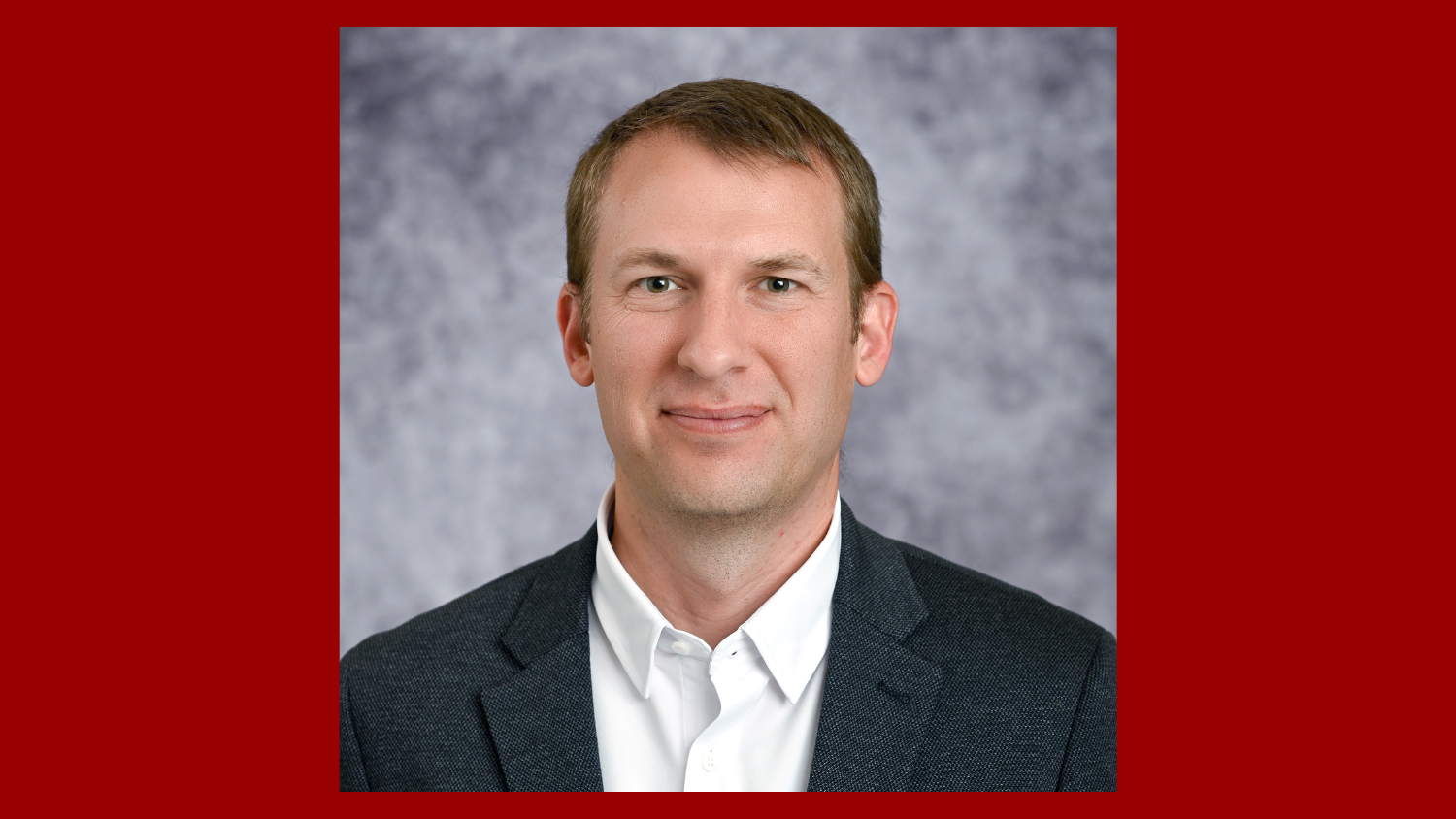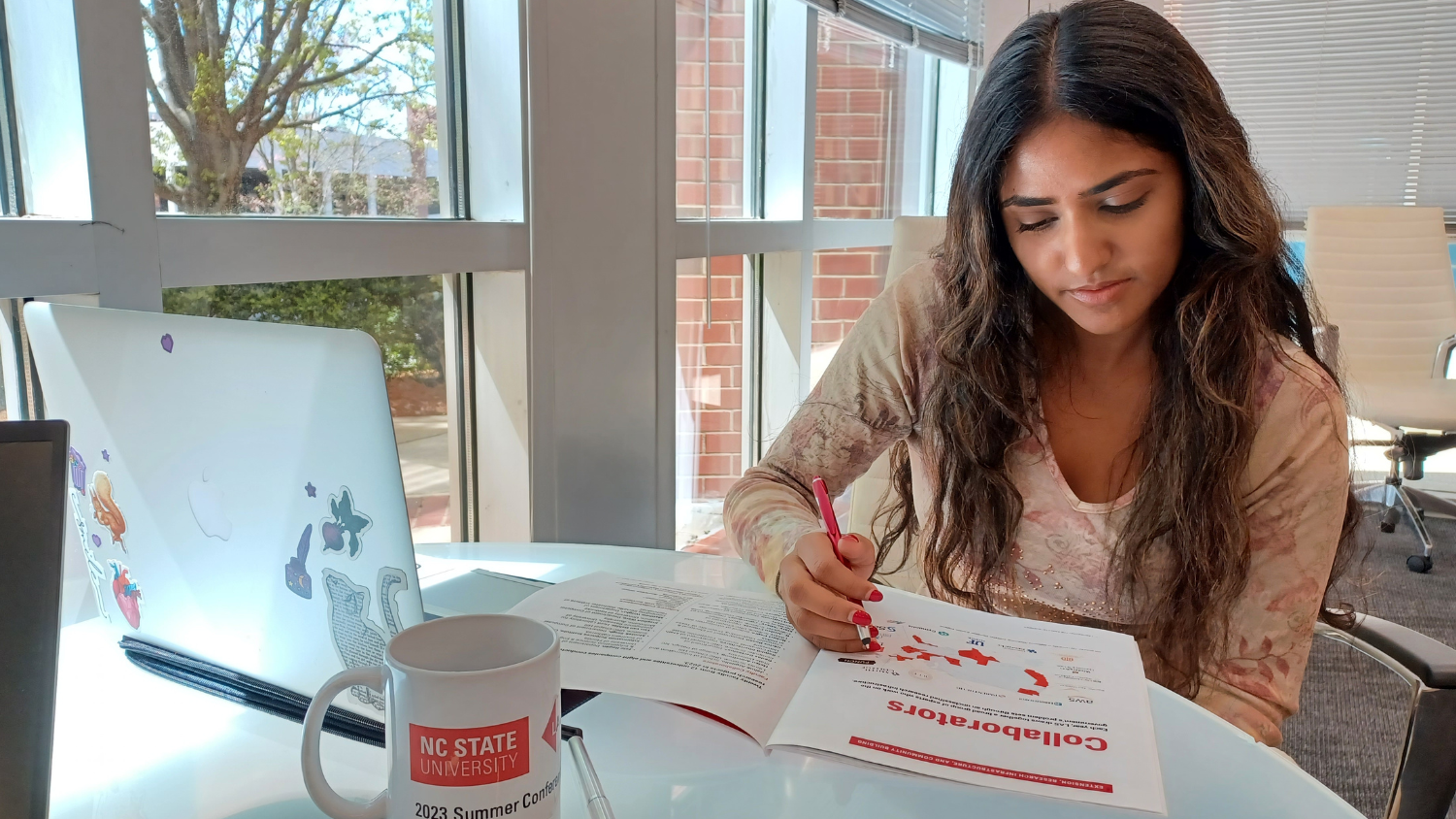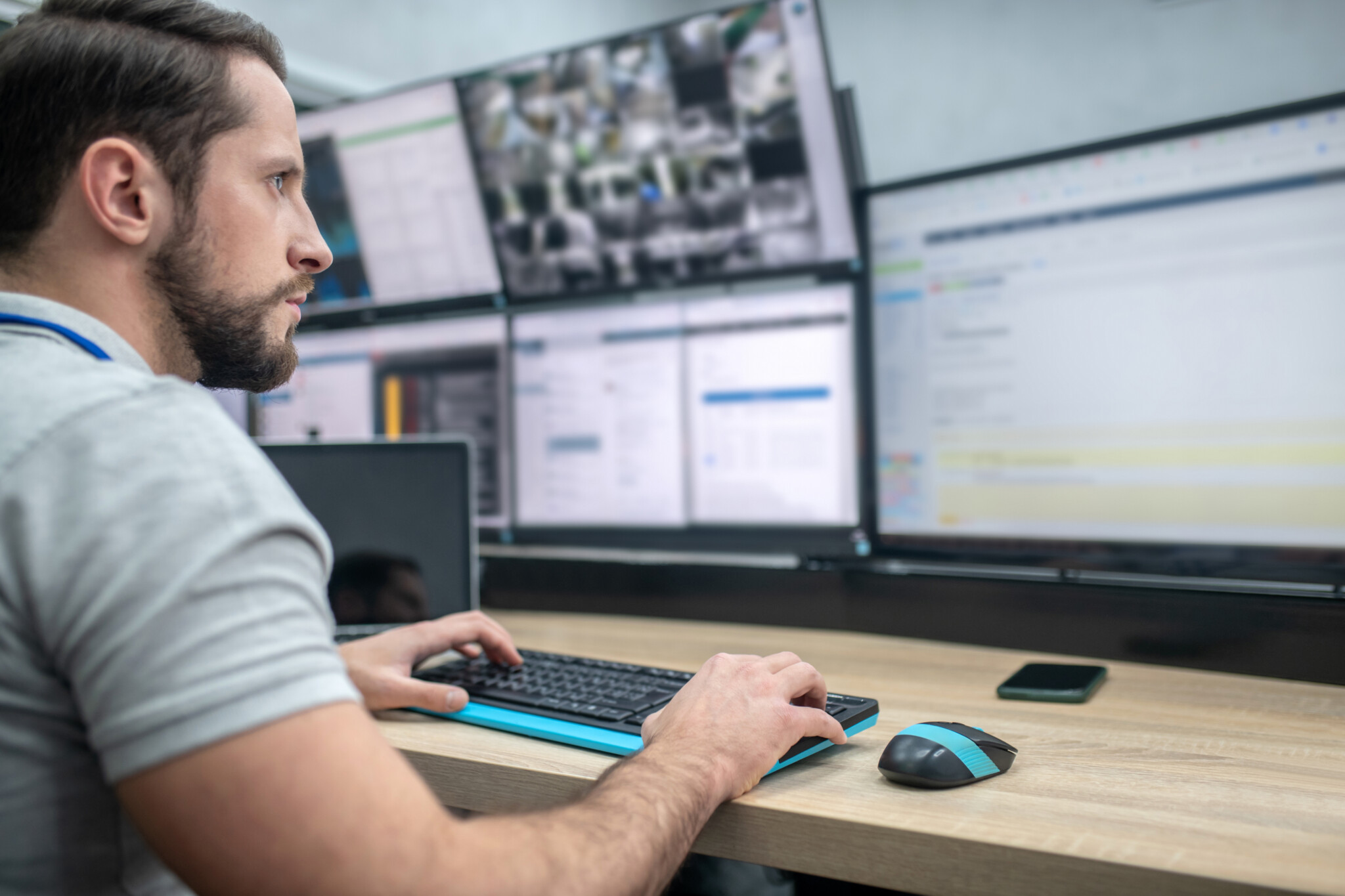Solutions to National Security at the 8th Annual LAS Research Symposium
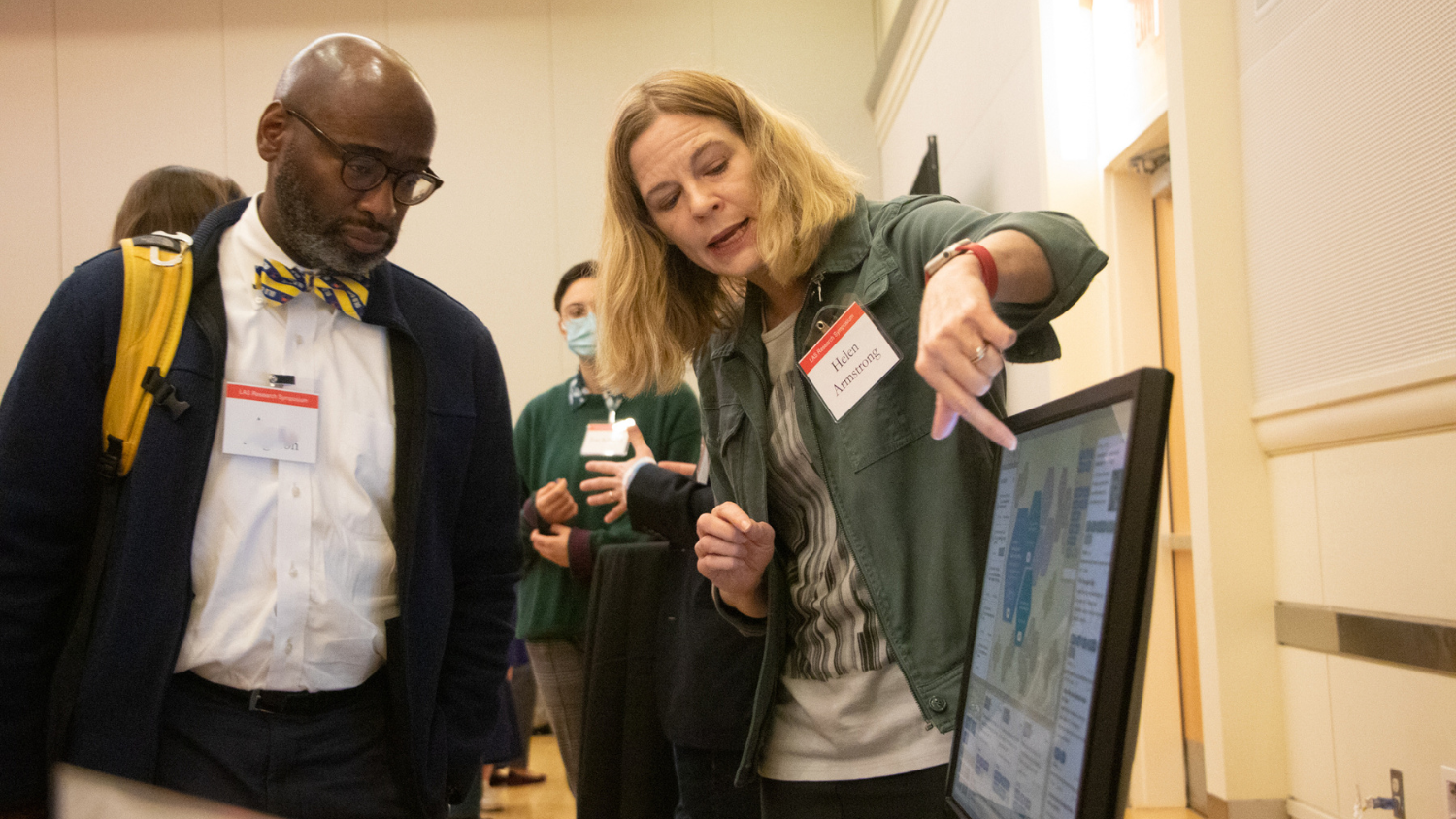
Academic, industry and government collaborators shared their latest innovations at the signature end-of-year event for the Laboratory for Analytic Sciences.
Searching hours of footage for the sound of gunshots. Turning spreadsheets into colorful maps to see where a country invests its money. Teaching machines to look for mission-critical information. These were some of the latest artificial intelligence and data science technologies and tradecraft on display at the research symposium held December 6 by the Laboratory for Analytic Sciences (LAS) at Talley Student Union.
LAS is a partnership between the National Security Agency and NC State. Nearly 200 academic researchers, students, government employees and industry professionals gathered for LAS’s first in-person symposium since 2019 to discuss solutions that could make analysts’ jobs easier and improve national security. The eighth annual symposium began with a keynote address from Rob Dunn, senior vice provost for University Interdisciplinary Programs and applied ecology professor at NC State. Dunn drew parallels between the interdisciplinary aspects of the natural science world and LAS.
“If we combine the extraordinary skills in this room with the perspectives that are coming from other disciplines, [we] will be able to do a better job of anticipating change,” Dunn said.
In addition to remarks from LAS leadership Amy Brown Gagnon and Alyson Wilson, NC State’s vice chancellor for research, Mladen Vouk, welcomed attendees. He spoke about the importance of linking research with real-world problems, like those from the intelligence community.
“LAS is a perfect example of how we think and do here at NC State,” Vouk said.
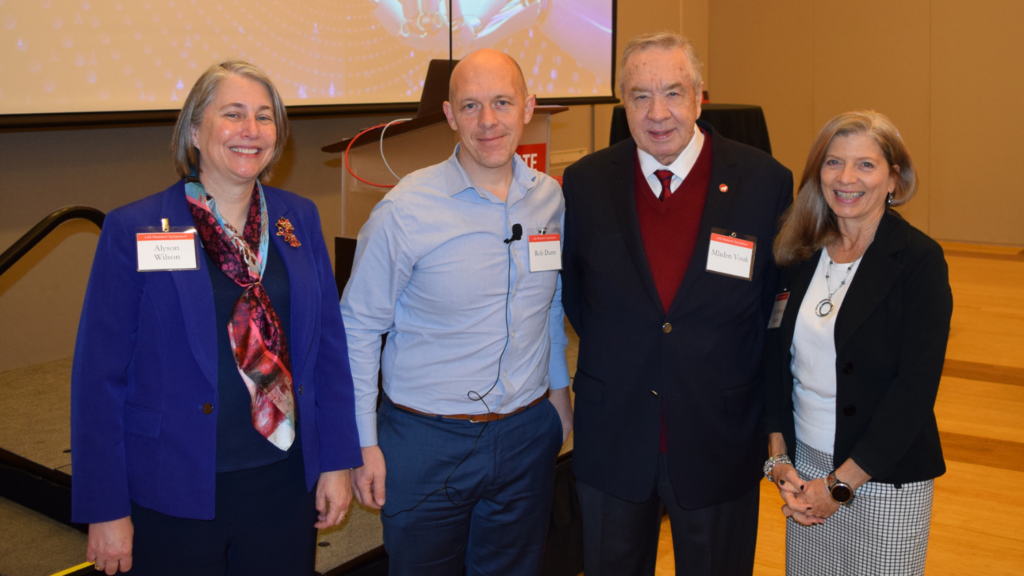
This year’s symposium focused on three themes:
- Building a Diverse, Expert Intelligence Community Workforce
- Data Science and Machine Learning in Content Triage
- Scaling Artificial Intelligence & Machine Learning to Support Next-Generation Platforms
Each theme began with a 45-minute presentation followed by an hour-long interactive poster and demo session. The interactive sessions provided researchers the chance to show off the results of their projects and interact with partners who may use it in real-world intelligence applications.
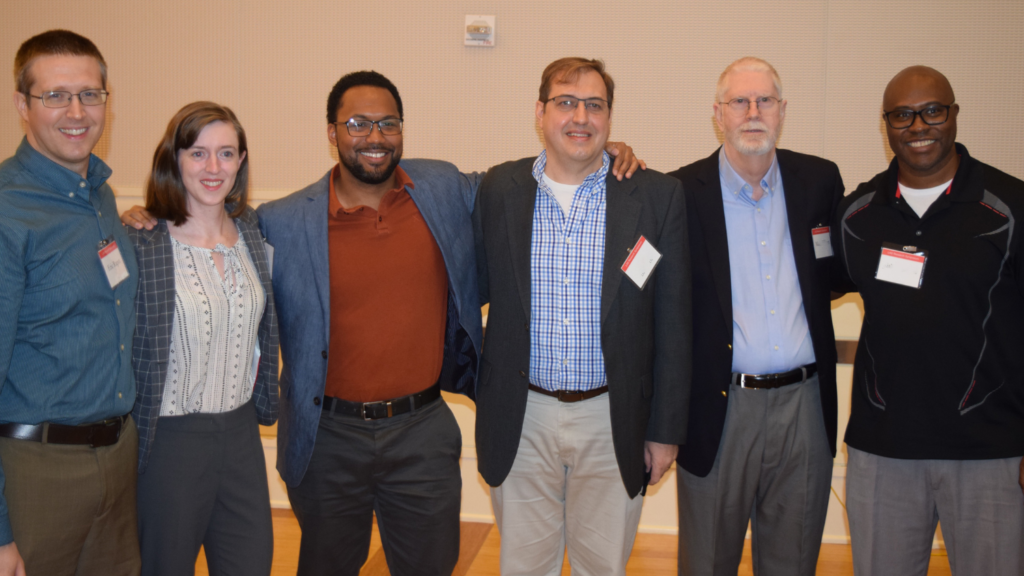
An intelligence workforce and its workflow
In the first theme, human subjects research projects like PandaJam studied how intelligence analysts go about their tasks in order to understand their workflows and make suggestions that could improve efficiency. Symposium attendees were able to explore LAS-sponsored senior design student projects, as well as projects about recruiting talented employees to help increase diversity in the intelligence community workforce. For example, LAS developed a process for NSA to collaborate with minority-serving institutions like Fayetteville State University on research and development projects. This directly supports one of NSA’s top priorities of building and sustaining a diverse, expert workforce that continues to provide the country with competitive advantages.
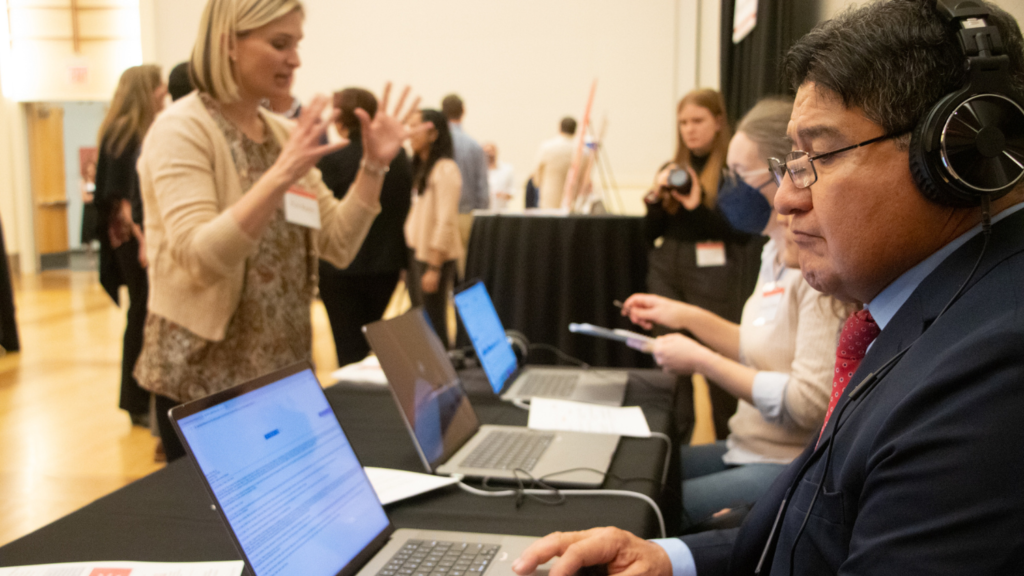
“This my first conference, but it’s really inspiring to see people who are doing the kinds of things that I want to be doing, and seeing how they got there,” said Esa Schenck, a statistical and data science student at Smith College who traveled to the symposium with other LAS collaborators from Smith. “It’s really lovely to see these different [career path] options.”
Attendees also learned about LAS’s Summer Conference on Applied Data Science, which studies how artificial intelligence and machine learning can create customized reports tailored to an individual analyst’s interests.
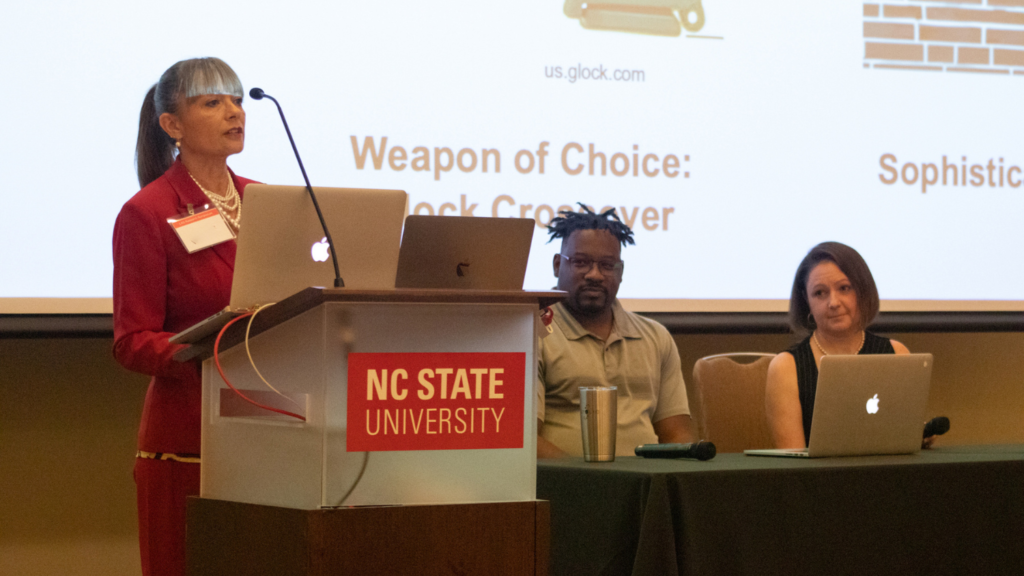
Content triage: Finding info fast during a fictional terrorist attack
When time is limited, how do we quickly find the information we need in order to make the right decision? Presenters in the second theme led the audience through a fictitious story about a group of intelligence analysts using LAS research projects to stop a terrorist attack. They shared how LAS is integrating video, image, speech and text analytics into mission-relevant workflows. For example, technology that uses object detection can search video footage for a graffiti mark on a building, or police body camera audio for the sound of gunshots.
During the poster and demo portion, attendees were also able to discover the latest projects on data science research that can be applied directly to military and defense mission strategy – like the Chinese Belt and Road Initiative (BRI) dashboard, a geospatial visualization tool that uses spending data to create a map showing the scope of China’s economic influence in other countries.
“The BRI [dashboard] is already making its way to the operational environment, and I think some of the speech projects are very promising, particularly the analytics that are focused on the users, like PandaJam,” said Bill Purnell, chief of computer and analytic sciences research at the NSA. “We appreciate the partnership that we’ve got here [at LAS].”
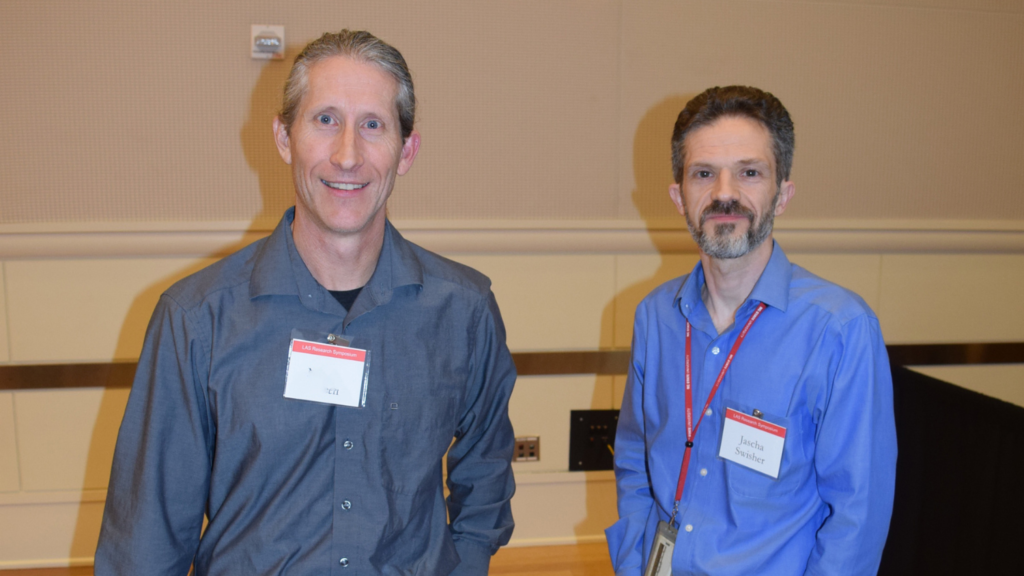
Trusting the technology
In the third theme of the research symposium, “Scaling Artificial Intelligence & Machine Learning to Support Next-Generation Platforms,” presenters discussed the potential to make machine learning (ML) usable in the intelligence community in as many ways as needed. Attendees explored how ML is being used through knowledge graphs and studied to build more trust in it among users. The hope is that if analysts understand how ML works, they will be more likely to incorporate it into their work.
There are challenges to actually putting machine learning into operation. For instance, current state of the art models are often resource intensive, not only when being trained but also when simply being used to make predictions on new data. But state of the art models might not always be required: if we could know ahead of time what data might be “easy” to predict on, those data elements could be directed to smaller, faster machine learning models, while the large, complex models are reserved for the most difficult data. This is the approach that NC State professor Tim Menzies and his students explored. They found that at least for certain classes of prediction problems on text data, comparatively simple measures could accurately determine which samples could be adequately handled by small, fast models, and which truly required slower, state of the art models. Overall they showed that a combined system could yield performance very close to the state of the art while operating almost an order of magnitude faster.
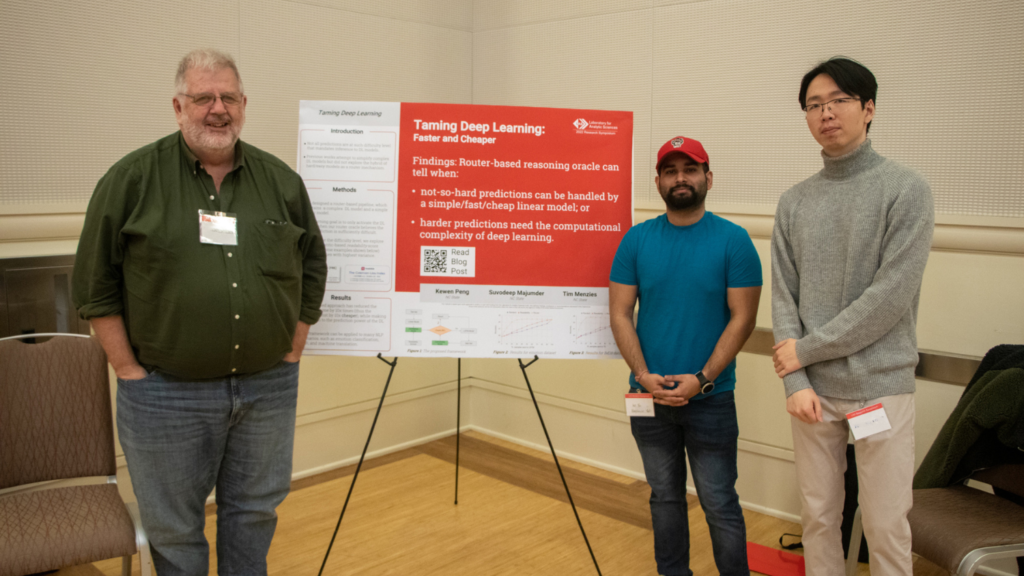
Next steps
Most of the work LAS does is unclassified, but attendees with security clearance also had the chance to see how this research and technology could potentially be applied in an operational environment. A second day of the symposium was held at LAS’s office on Centennial Campus.
“We’ve talked about how we needed to create more analytics that are directed at the user to understand what features they were using and what features they weren’t,” Purnell said. “If we can understand those features, and in the order in which they use it, we can automate these kinds of things for other people. I think that has a tremendous amount of potential.”
Symposium 2022 Presentations
Watch recordings of the speakers and presentations from December 6, 2022.
- Categories:
